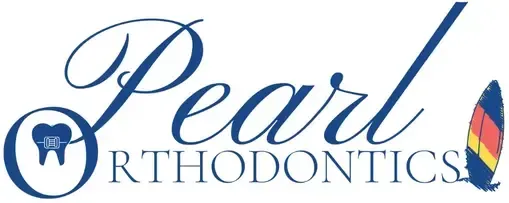Braces for All Ages
Types of Braces
-
Early Treatment
Children, adolescents, and adults can benefit from treatment. It all depends upon individual circumstances to determine the most ideal time to begin treatment. The American Association of Orthodontists recommends that every child visit and orthodontist by age seven, unless a problem is evident earlier. This can simplify or even eliminate the need for full orthodontic treatment later. Early treatment is designed to encourage jaw growth and correct problems early. Even if a problem is detected, immediate treatment may not be recommended. Sometimes the orthodontist will take a “wait-and-see” approach-checking your child from time to time as the permanent teeth come in.
-
Two Phase Treatment
What is "two-Phase" orthodontic treatment?
Two-phase orthodontic treatment consists of two separate times when a child recieves orthodontic treatment. A first phase of treatment is done while the child still has many or most of their primary (baby) teeth. A second phase takes place when the child has most or all of their permanent teeth.
Braces may or may not be used during a first phase of treatment. Other appliances (the name used for braces and other devices for orthodontic correction) may be used. Your orthodontist has the training and clinical experience necessary to diagnose and treat your child's orthodontic problem.
How does two-phase treatment benefit my child?
A first phase of treatment benefits patients physically, enabling them to bite or chew more effectively. It may reduce the risk of breaking front teeth that protrude and for many patients, there is improvement in self-esteem.
Younger patients may be more cooperative and follow the orthodontist's instructions on appliance wear and oral hygeine. The desired changes that result from a first phase treatment may contribute to long-term stability, meaning that teeth stay where the orthodontist has moved them. A second phase of treatment moves permanent teeth into their final positions.
Does a child's growth affect orthodontic treatment?
Orthodontic treatment and a child's growth can complement each other. By timing orthodontic treatment to predictable stages of dental development, the orthodontist may be able to take advantage of your child's growth and development. Some problems that can be treated quite well in a growing child may require corrective surgery if treated after growth has occurred.
Goals of two-phase treatment
- A proper relationship of teeth and jaws, so that they work correctly
- Correct alignment of the teeth for a beautiful smile
-
Teens and Adults
The American Association of Orthodontists recommends treatment for Adults, when appropriate, in conjunction with regular dental care. Some of the reasons correction of orthodontic problems are important to adults include:
- Can help prevent or improve periodontal problems
- Can help prevent or reduce further bone loss around teeth
- Improves ability of the dentist to restore missing teeth
- Improves aesthetics for a better smile and facial appearance
- Improves function of teeth
- Improves self-confidence and self-esteem
- Improves oral health
By working together, the dental team can achieve results for patients that cannot be produced alone. Final treatment decisions should be made in consultation with the family dentist, the orthodontist, and other specialists if necessary.
-
Types of Braces
Getting braces isn't what it used to be. Today's options range from colorfully cool, to nearly invisible. The choice is yours and you don't have to come up with the answers alone. Your orthodontist is an expert in helping you find your perfect match. So set up a time to talk about your options. Until then, here's a quick overview of the different types of braces available today.
Ceramic braces (clear)
No one will ever know you're wearing these nearly invisible braces
Metal braces (silver)
Metal braces are more comfortable and fashionable than ever
-
Invisalign
The clear alternative to braces
Invisalign is a virtually invisible solution, so you can smile confidently both during treatment and after. Using a series of clear, removable aligners, Invisalign gradually moves your teeth toward the desired positions. Invisalign is not compatible for all cases but ask Dr. Patil if Invisalign can work for you!
